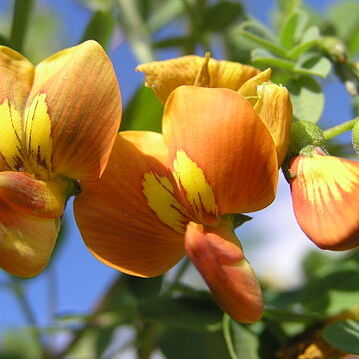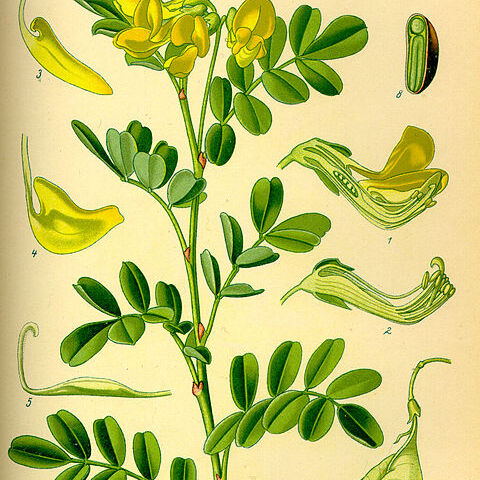Shrubs or small shrubs. Leaves imparipinnate, rarely 3-foliolate; stipules small; leaflets entire, opposite, estipellate. Racemes axillary, long pedunculate; bract and bracteoles very small or absent. Calyx campanulate; teeth 5, subequal or upper 2 smaller, outside pubescent. Corolla yellow or brownish red; standard suborbicular, upper part of stalk bicallose; wings narrowly falcate-oblong, with short stalk; keel broad, mostly inrolled, blunt at apex, with long connate stalk. Stamens diadelphous, upper 1 free, other 9 connate to tube; anthers homomorphic. Ovary stipitate; ovules numerous; style incurved, barbate along upper ventral suture; stigma inrolled or hook-curved. Legume inflated, bladderlike, acute or tapering at apex, indehiscent or tip 2-valvate, with long stalk at base, segments membranous. Seeds numerous, reniform, without strophiole; funicle filiform.
Cal-tube hemispheric, slightly oblique, the lobes triangular-acuminate, subequal; standard rotund to reniform; wings and keel-pet strongly auriculate at base, the wings falcate, oblong, the keel up curved; stamens 10, diadelphous, the uppermost one wholly free; ovary elongate; style hairy distally, hooked at the summit; shrubs with odd-pinnate lvs and medium-sized yellow fls in axillary racemes. 25, Old World.


